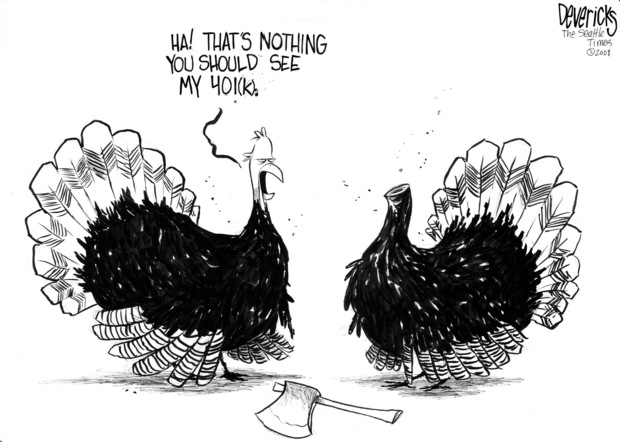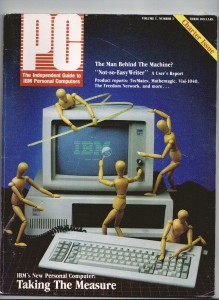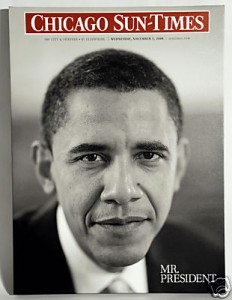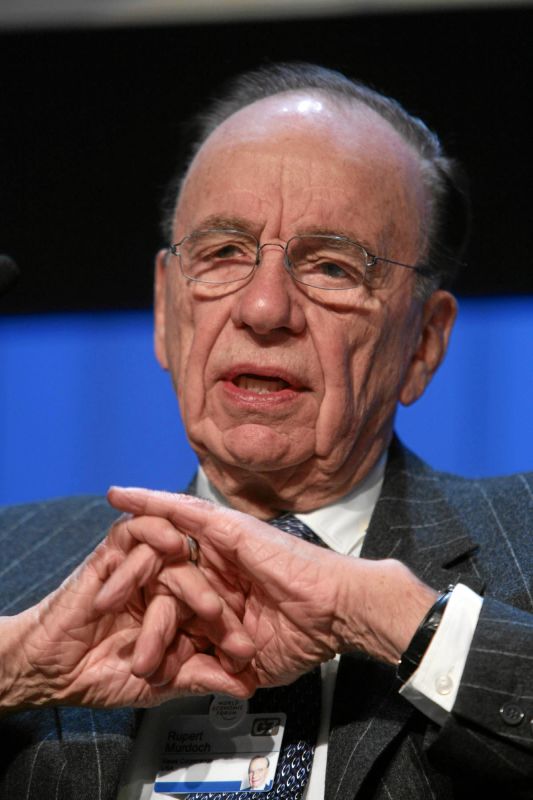Hot on the heels of the newspaper industry’s record-breaking 18.1% quarterly revenue decline, analysts are weighing in with dire forecasts and advice.
“A newspaper that cannot sell enough advertising or cut enough expenses to sustain profitable operations is not likely to make it to the other side of 2009,” writes Alan Mutter in a depressing outlook on the industry’s immediate future. While the rest of Mutter’s post isn’t as provocative as that closing statement, it provides a detailed analysis of which markets are mostly likely to see mergers or closures (Minneapolis, San Francisco, Southern California, Southern Florida) as well as markets like Chicago and Boston, where two competitors are locked in battles of mutual destruction. The most likely scenario for 2009 is that publishers will have to choose from a palette of equally distasteful cost-cutting options, and that the measures they have to take will be more drastic than the 10%-20% workforce cuts of the past year. Mutter lists voluntary pay cuts, massive outsourcing, frequency reduction and asset sales as being on the table.
Fitch Ratings might agree. Its report says several major daily papers could shut down by 2010. Speaking in that odd third-person-singular that investment companies like to use, the agency sa
ys “Fitch expects newspaper industry revenue growth will be negative for the foreseeable future,” and that credit ratings are likely to decline further. Unlike the 2001 advertising crash, this one is affecting both national and regional advertisers, the credit rating agency says. “And unlike the easy credit and lower interest rates during the 2001 ad recession, this time advertisers and consumers face a credit freeze.” The outlook for 2009? Don’t ask. Fitch expects real US GDP to drop 1.2% while inflation hovers at 2.7%.
Steve Outing has some advice for newspaper executives struggling with the reinvention question. While his E&P column isn’t as edgy as usual, his prescriptions are practical. The most counter-intuitive in our opinion: stop chasing young people. Millennials aren’t going to read newspapers, so your redesigns intended to make your print edition more appealing are going to fail. Reach out to them through their mobile devices and services that aggregate their social networks with news (he isn’t more specific about this; Facebook is a pretty big obstacle to this goal). Focus your print editions on the readers who want to read print. Yeah, they’re older, but they’re still viable. You’re going to be
managing print down for the next 15-20 years, so get used to it. And while you’re at it, start pushing those older print readers online. Make your newspaper a gateway to enhanced services on the Web. And for God’s sake, stop wasting your time on fluffy lifestyle pieces. Print loyalists want serious journalism.
Outing has some investment advice, too: hire someone to maximize online visibility through social media channels, bring in a mobility specialist and give your staff time to come up with novel ideas for reinvention. The problem, of course, is who’s got the time or money for all this? Outing doesn’t address the budget issue but then again, he’s a pundit, not an accountant.
Profiling the Provocateur
 The New York Observer has a long profile of local media guru Jeff Jarvis, who perhaps vexes the mainstream media industry more than any other contrarian. That’s because Jarvis, who now teaches journalism at NYU and agitates with his popular Buzz Machine blog, is one of them. He worked at the San Francisco Examiner, New York Daily News, People and TV Guide, among other outlets, and was founding editor of Entertainment Weekly. Jarvis may understand traditional media’s pain, but he doesn’t cut the industry much slack.
The New York Observer has a long profile of local media guru Jeff Jarvis, who perhaps vexes the mainstream media industry more than any other contrarian. That’s because Jarvis, who now teaches journalism at NYU and agitates with his popular Buzz Machine blog, is one of them. He worked at the San Francisco Examiner, New York Daily News, People and TV Guide, among other outlets, and was founding editor of Entertainment Weekly. Jarvis may understand traditional media’s pain, but he doesn’t cut the industry much slack.
He is passionate about citizen journalism and the need for media institutions to remake themselves as hubs of news, commentary and conversation among a community of people with similar interests. He has little tolerance for the go-slow mentality that pervades American newsrooms. As Jarvis sees it, the quicker we blow up the old, the quicker we can get on with the new. And he makes his points in blunt, sometimes profane language.
This has made Jarvis a hot potato for a tribe of senior editorialists who are trying to balance their respect for the man with their distaste for his revolutionary ideas. The piece quotes several of these top editors, including New York Times Executive Editor Bill Keller, who clearly finds some of Jarvis’ ideas persuasive but is uncomfortable with his extremism. Gawker’s Nick Denton sums it up: “Of all the Internet supremacists, he is the one who has betrayed his origins in print. Of all the people who grew up in newspapers and magazines, he is the one who has most clearly abandoned them.”
Jeff Jarvis is required reading at the Death Watch and we commend him to you.
Poignant Tales From the Front Lines
Pam Podger and her husband moved from Virginia to Montana because they loved the natural beauty and the lifestyle. They took at job at the Missoulian. Nine months later, they were both laid off on the same day. More than 50 years of journalism experience was thus thrust out on the street, with two kids to care for. Podger writes in American Journalism Review of her anxiety, her fears about the future of journalism and her determination to stick it out in her new home.
Cost-cutting is robbing the public of an American institution – the editorial cartoonist. “In the past three years, around three dozen artists have been laid off, forced to take buyouts or to retire, according to the Association of American Editorial Cartoonists,” says an Associated Press piece. The story spotlights Eric Devericks, whose work is pictured above. Devericks has known nothing but success since his work was recognized with a national award while he was still in college. But rewards don’t amount to a hill of beans in an industry that’s cutting bone, so the Seattle Times laid him off effective next Friday. Next month, Devericks, his wife and three kids are “heading to southern California, where two buddies have offered Devericks a job as a business development specialist for their new industrial design company,” says the AP account. The curtain is quickly coming down on a generation of journalists who proved that the brush, as well the pen, can be mightier than the sword.








 Rupert Murdoch biographer Michael Wolff says the media mogul was
Rupert Murdoch biographer Michael Wolff says the media mogul was 

